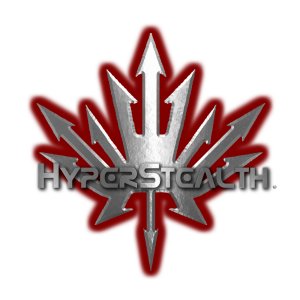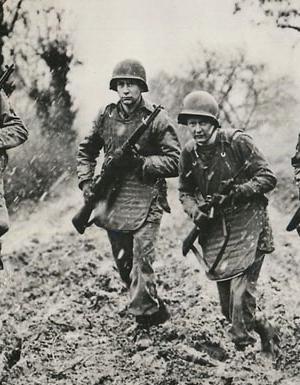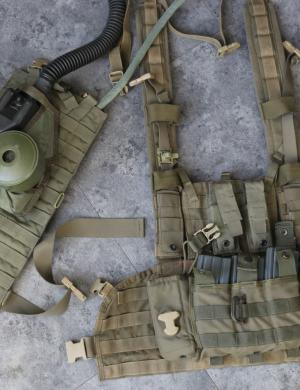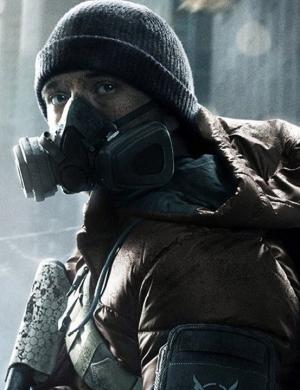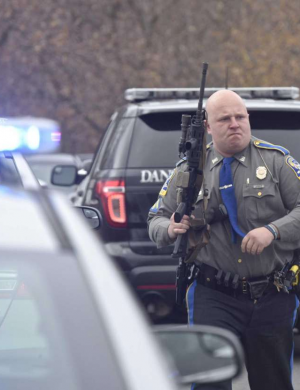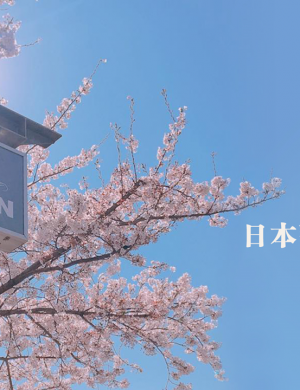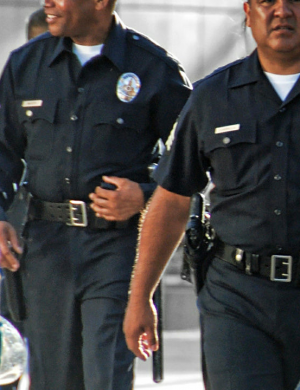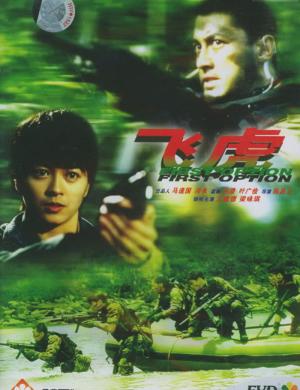U.S. Army Camouflage Improvement Explained
by Guy Cramer, President/CEO of HyperStealth Biotechnology Corp.
Urban Legends Prevail when it comes to U.S. Army's Camouflage Improvement Effort(Vancouver, B.C. May 21, 2013) The U.S. Army’s Phase IV Camouflage Improvement Effort has come under heavy criticism as the general public reads news stories that the Army is once again considering changing their camouflage and that the costs are in the billions. As an expert in camouflage (I have worked with over 50 countries and currently over 2,300,000 military uniforms have been issued with patterns I’ve developed and I teamed up with ADS Inc. of Virginia Beach and our [ADS INc./Guy Cramer] US4CES family of camouflage was selected as a finalist in the Phase IV program), I will use this opportunity to discuss many of the fallacies of the arguments which I am seeing on the discussion boards and blogs which have started a frenzy of opposition to programs which have been ongoing for a number of years with very little interest until now.
Didn’t the Olive Drab (monotone) uniforms work, why did the U.S. military switch to camouflage in the first place? Canada wore Olive Drab fatigues up until the late 1990’s when their military research showed that there is a 45 percent less chance of being detected from 50-300 meters away with their new CADPAT (Canadian Disruptive Pattern). They also found that the enemy had to be 35% closer to a soldier wearing CADPAT to detect him/her over the soldier wearing a Monotone (Olive Drab) Uniform. CADPAT TW (Temperate Woodland)CADPAT AR (Arid Regions)Further NATO trials among all camouflage uniforms used by all the countries that make up NATO showed that CADPAT outperformed all other camouflages including U.S. Woodland, British DPM, German Flectarn... Recent NATO studies in 2012 in Australia confirmed that CADPAT TW is one of the most effective patterns in Tropical and Subtropical regions. CADPAT is the first pixelated camouflage to be issued. The U.S. Army had experimented with pixelated camouflage uniforms in the 1980's the biggest issue was people outside of the testing could not understand how something so artificial looking could be more effective than the standard blobby camouflage. The Canadian and NATO studies changed that perception.
MARPAT (USMC Pattern) The USMC became very interested in CADPAT once the pattern had been validated by both Canada and NATO. With the permission of the Canadian Government the USMC was granted permission to use the same pattern (but in different colors). The USMC used the exact same print screens and recolored the pattern to meet their requirements even going so far to call the new coloration MARPAT (the Marines made a slight change to the print screens adding a small USMC Globe and Anchor to print every few feet). (1) The USMC conducted their own objective trials on MARPAT and found that it outperformed Olive Drab in detection taking more than 3 times longer to detect and once detected just over 2.5 times longer to identify the target. The same study also showed that the digital pattern outperformed the NATO camouflage (used to camouflage vehicles and similar to the U.S. BDU Woodland pattern) – in both detection and identification. (2) The USMC began to issue Woodland MARPAT and Desert MARPAT in 2001 The chart below on the left is Detection (Where is it) and the chart below on the right is Recognition (What is it).
The U.S. Army Universal Camouflage Pattern Rather than switching to a Woodland and Desert like the Marines, the U.S. Army switch to a pixelated Universal Camouflage Pattern (UCP) (all-in-one pattern) in 2004 It turns out that field trials were never carried out on UCP before it was issued. 
How did the idea of All-In-One/Universal camouflage originate? There was a study carried out by the Army between 2002-2004 to find a new camouflage to replace the BDU Woodland Camouflage and DCU Desert camouflage uniforms with something more effective. The program started out in 2002 with Phase 1 and 2 looking at Woodland, Desert, Urban and Desert/Urban environments in three patterns developed by the U.S. Army Natick Soldier Center. 
In 2003 for Phase 3 of this particular test they merged common colors from each pattern into an all-in-one environment coloration, this is when compromises were made of colors to attempt to achieve one pattern, with one color scheme for all environments. 
As the idea of an all-in-one coloration began to take shape and a critical aspect began to emerge with NIR (Near Infrared) colorations (many colors do not work well in the NIR or SWIR [Short Wave Infrared] leading to high visibility of the target under Night Vision technology. Note in the table below that none of the desert colors worked well in the NIR spectrum (we will get to this later), and the only acceptable colors from the other environments were Black (Woodland), Medium Gray (Urban) and Medium Tan (Desert/Urban). 
Remember that in military operations, half of the time you are dealing with night conditions, so the NIR and SWIR becomes close to half of the solution.
At this time Multicam entered the competition as the "Contractor Developed Mod", Multicam like UCP also originated from the concept of a global palette: Once the final 4 patterns were tested in the 3 separate environments (Woodland, Urban and Desert) in both daylight and nighttime with NIR scopes, all four showed variable effectiveness across all terrains in daylight but were almost identical in the Night (NIR) testing. Multicam (called Contractor Developed Mod in the test) scored 43 out of 100 (100 being the best) at Ft. Pok (Desert) in daytime and 77 out of 100 at Night (NIR), but in Woodland environments at Ft. Benning Multicam only scored 57 out of 100 in daytime and 48 out of 100 at night.
Note the Data Analysis - Day chart on the left (below) shows effectiveness from 40 to 65 (out of 100) whereas the Data Analysis - Night on the Right (below) shows effectiveness from 40 to 90 (out of 100) I've redone the bar chart below based from the Daytime results above but the difference in my chart below is with a scale from 0-100% (100 being the best). The compromise across Woodland / Urban / Desert in exchange for an All-In-One global color scheme can clearly be seen. 
The overall winner of the competition was All-Over-Brush (Multicam "Contractor Developed Mod." placed 3rd out of the 4 final patterns but as you can see from the chart above there was not a great deal of separation among the 4 patterns.). (3) 
So the Army had found a solution but the results were not encouraging, to get an all-in-one pattern you needed to compromise and lose effectiveness in all environments versus a more effective coloration for each environment.
Universal Camouflage Pattern (UCP) Shortly after these results were obtained Universal Camouflage Pattern (UCP) was announced by the U.S. Army in 2004. However, UCP was not part of the 2002-2004 testing (it is a common misconception that UCP was derived from these tests, probably because the name of the pattern is Universal Camouflage Pattern (UCP) and the name of the test was Universal Camouflage For The Future Force Warrior), while the Power Point that now accompanies the test results (shown in the slides above) shows UCP on left side background of each slide, the UCP pattern was in-fact not part of the test.
Where did UCP come from? The U.S. Army used the same screens as CADPAT/MARPAT and recolored them based on three universal colors determined from the U.S. Army 2002-2004 tests to come up with UCP, (two of the screens use the same color) again they picked colors based off of the 2002-2004 study but did not actually test the UCP pattern with those colors. The pattern itself was proven with the Canadians and USMC so combining an effective pattern with a new color scheme should provide a good all-in-one pattern? Wrong in the case of UCP. (we will see later that in the case of the U.S. Navy's AOR-Universal - they managed to get it close with different coloration) 
It didn’t take long after soldiers were issued this new camouflage to notice that the UCP was not working and with combat operations going on in both Iraq and Afghanistan, the U.S. Congress began to receive complaints from soldiers that the camouflage was jeopardizing their missions and their lives. The U.S. Congress asked the Army for the research that led to the decision on UCP and it was discovered that there was none. It appears that someone circumnavigated the scientific process and forced UCP in.
The decision to not use the All-Over-Brush (winner of 2002-2004 trials) and to go with the untested UCP has not been fully disclosed but it appears that it was not the fault of the Army groups involved who went to extreme lengths in the 2002-2004 testing to find something which met the criteria.
Testing UCP The U.S. Army (Natick) then conducted the testing on UCP and 17 other patterns between 2007-2008 and the results with the final 13 patterns showed UCP performed poorly in Desert scoring 9th out of 13 patterns, Urban (8th place) and Woodland (12th place). Multicam was better scoring 6th out of 13 in Desert, Urban (4th place) and Woodland (6th place). The two MARPAT patterns tested extremely well: with Desert MARPAT scoring 3rd place out of 13 patterns in Desert, Urban (1st place) and the Woodland MARPAT scored (2nd place in Woodland) 
A trend was starting to develop in the research – All-In-One color schemes were not proving as effective as color specific camouflage (colored specific to the intended operating environment). These graphs are based on the results of the NATICK 2007-2008 Study 


Natick's conclusion from this study: "The data clearly show that environment-specific patterns provide the best camouflage, i.e., the lowest probability of detection, in their respective environments" (4)
U.S. Army Phase III Camouflage ImprovementThe U.S. Congress at this point had enough information to have the U.S. Army begin the process to find a solution to the failed UCP, but of critical importance were the ground troops in Afghanistan where UCP was not working. A worldwide solution "Phase IV" would take much more time to research properly so this Phase 3 focused on the specific environments found in Afghanistan. The U.S. Army Camouflage Improvement Phase 3 Effort (U.S. Congressional Mandate) was to find a fast solution to those combat troops in Afghanistan so another set of tests were done by Natick in environments which would be found within this area.
In Afghanistan you didn’t have large areas that are either woodland or desert; it was more of an in-between setting now referred to as “Transitional” environments. All the testing up until this time had focused on Woodland, Desert and Urban and yet a large part of the world is within Transitional.
The results of this Phase 3 testing concluded that within Afghanistan type environments Multicam outperformed the other patterns within these environments
In Rocky Desert terrain: 1st Place Multicam
2nd Place USMC Woodland MARPAT Digital
3rd Place Woodland Digital
In Mountainous Terrain testing: 1st Place Tie Multicam and U.S. Navy AOR-Universal both tested equal
2nd Place Woodland Scorpion
3rd Place U.S. Navy AOR-2
Cropland/Woodland tests: 1st Place Woodland Digital
2nd Place U.S. Navy AOR-2
3rd Place USMC Woodland MARPAT Digital
Sandy Desert Terrain tests: 1st Place DCU Digital
2nd Place U.S. Navy AOR-1
3rd Place Desert Brush
4th Place USMC Desert MARPAT
There are a few noteworthy items we can pull out of these results.
Multicam won the competition with an overall score of 80 out of 100 and this led to it winning the Phase 3 trials and becoming the pattern known in the U.S. Army as OPERATION ENDURING FREEDOM (OEF). We can also see that it scored 72.5 out of 100 in Cropland/Woodland tests and 58.3 out of 100 in Sandy Desert Terrain. It did not break the top 10 patterns tested in either of these two critical environments. This confirmed to the Army that the All-In-One concept was likely not achievable with conventional camouflage. The results for Cropland/Woodland and Sandy Desert were similar to the previous tests with Multicam but now it was placed within "transitional" (Rocky Desert and Mountainous) environments which was specific to it's coloration.

Also note that the U.S. Navy AOR-2 placed second in Cropland/Woodland with a score 85.1 out of 100 (12.6% better than Multicam/OEF). MARPAT Woodland was beat by the Navy’s AOR2 (same pattern but recolored), and the Navy’s AOR1 beat the MARPAT Desert in Sandy Desert Terrains. 
Digital DCU placed first in the Sandy Desert with a score of at least 89.7 out of 100 (31% better than Multicam/OEF)(Note the table does not include scores for Digital DCU with matching PPE (Personal Protective Equipment -in this case the torso vest) - it does included Digitial DCU with Khaki PPE at 89.7 and we are told that the winner was DigitaDCU witlh matching PPE, so we can assume the score with matching gear - PPE was higher than 89.7%) 
UCP was a failure within this test scoring a dismal overall score of 27.8 out of 100 in all four environments confirming the previous testing. 
UCP-C (not shown) was an attempt to fix the UCP pattern by adding Brown as a color – it did help in the Cropland/Woodland tests where it placed 4th (it beat Multicam), but it could not compete overall.
The Navy’s AOR-Universal equaled Multicam in the mountainous terrain but did not do as well in Rocky Desert or Cropland/Woodland backgrounds, it did 9% better in Sandy Desert than Multicam. Remember that UCP and AOR-Universal use the same screens - same pattern - different colors. UCP failure was not the pattern but the colors used. 
The BDU Woodland pattern (used for over 20 years by the U.S. Military) which many people expect is still a good pattern only scored at 59.8 out of 100 in Cropland/Woodland testing and 1.3 out of 100 in Sandy Desert (you can't get much worse than 1 out of 100). 
So the current baseline patterns for the U.S. Army Phase IV Camouflage Effort were based off of the best patterns within this most current series of tests. Both AOR1 and AOR2 outperformed both MARPAT Woodland and MARPAT Desert patterns in Cropland/Woodland and Sandy Desert to become the baseline patterns.
The U.S. Army Phase IV Baseline patterns: Woodland/Tropical = AOR2 Transitional= Multicam Desert/Arid= AOR1
There were patterns that tested better than AOR2 in Cropland/Woodland and AOR1 in Sandy Desert, why not use those?While it doesn’t show the (Experimental) Digital Woodland pattern on the chart that won the Cropland/Woodland it could be similar to the Chinese Army's Woodland Digital pattern and for obvious reasons you do not want to use something which is close to identical to theirs or could cause confusion with the main Chinese Army.
The winner of the Sandy Desert was the (Experimental) DCU Digital, however there is a large problem with DCU (commonly referred to as 3 color desert) and DCU Digital, the colors don’t work in the NIR or SWIR for night operations (there is no separation of colors) and the base color your left with is a higher reflectance than the background, the soldier is one brighter color than the entire background (he/she shines like a light), so you have to eliminate both of these patterns due to this issue. At least the UCP did have separation of colors within these Night Vision spectrums. (5) 

You can fix this issue with the addition of special polymers but this adds significant cost. (6)
Digital Pixel Patterns are EffectiveWhat we also see from the Natick study is that pixelated patterns still dominate the top place finishers in all environments. Pixel’s within camouflage are not a fad but a proven and effective form of camouflage. The failure of UCP was not due to the pixelated pattern but the colors chosen for the pattern. CADPAT/MARPAT/AOR1, AOR2 all come from the same print screens used for UCP.
In Rocky Desert terrain 1st Place Multicam
2nd Place USMC Woodland MARPAT Digital (pixelated)
3rd Place Woodland Digital (pixelated)
In Mountainous Terrain testing 1st Place Tie Multicam and U.S. Navy AOR-Universal (pixelated) both tested equal
2nd Place Woodland Scorpion
3rd Place U.S. Navy AOR-2 (pixelated)
In Cropland/Woodland tests 1st Place Woodland Digital (pixelated)
2nd Place U.S. Navy AOR-2 (pixelated)
3rd Place USMC Woodland MARPAT Digital (pixelated)
In Sandy Desert Terrain tests 1st Place DCU Digital (pixelated)
2nd Place U.S. Navy AOR-1 (pixelated)
3rd Place Desert Brush
4th Place USMC Desert MARPAT (pixelated)
The current Phase IV U.S. Army Camouflage Improvement Effort was mandated by the U.S. Congress when research on the U.S. Army’s current UCP (Universal Camouflage Pattern) showed that it was ineffective in almost all environments tested. It turns out that field trials were never carried out on UCP before it was issued.
Where are we going from here and is it justified?So here we are, late in the game, a decision has already been made and is about to be announced (the Army is stating an announcement is due within the next few weeks-many speculate this will come on the U.S. Army Birthday - June 14th, which is when they have made announcements like this before) and people are upset because they don’t understand why so much effort is being put into this, why so much money is allocated to camouflage uniforms and gear, they bring aesthetics into their opinion, they assume their ideas and concepts are correct, when much of what I am reading on Social Media... has not been based on facts.
The Army has decided based on these previous studies that an All-In-One color scheme does not effectively work around the world, thus they have decided on three major environments for the Phase IV with each company submitting a family of patterns to work in each one of the three environments. Each finalist needed to equal or surpass the effectiveness of the baseline patterns; AOR1 for Arid/Desert, Multicam for Transitional and AOR2 for Woodland/Tropical. All of these patterns did extremely well within their respective environments, but winner must somehow equal and outperform these three patterns.
This is just wasting more money?The costs associated with changing are for the most part costs that will be required regardless of changing or not, the average soldier goes through four uniforms per year. The gear made from heavier Nylon does not wear out that fast and so yes there will be some extra cost issues there.
Pattern RoyaltiesThe Phase IV program requested competing companies to decide on a one lump royalty from the Military which range from below $100,000 to over 6 million dollars between the four finalists, thus ending the pay as you print royalty – the cost savings here for the U.S. military are substantial if the winning patterns are used for more than one year. The company that wins will retain the license for all commercial sales (not military) and thus is expected to do well on their commercial royalties (in lieu of previous awarded government [military] royalties).
With three different environmental pattern uniforms, how many extra uniforms are they going to issue the Army Soldiers?We have heard that the transitional pattern (from the winning patterns – yet to be announced) will be considered the garrison wear uniform as well as for transitional environments, only if soldiers are deployed to Desert/Arid will they be issued those Desert/Arid uniforms, if they are deployed to Woodland/Tropical will they be issued just those Woodland/Tropical uniforms. So soldiers will not be issued a library of three uniform colorations. They will only be issued Arid and/or Woodland/Tropical uniforms if they are deployed to those specific regions.
Conclusion:What we see with the U.S. Military research is not a repeated exercise in how many camouflage patterns can the U.S. Military use at one time but an evolution of camouflage based on both Subjective and Objective testing, which (for the most part) went from Olive Drab into to the 1980’s to the BDU Woodland camouflage of over 20 years, to MARPAT in 2001 to the All-In-One concept with All-Over-Brush in 2002 along with Multicam and UCP in 2004 back most recently to dedicated environments with AOR-1 and AOR-2. Many of these steps showed improvement in effectiveness over the previous. Yes there were mistakes and this contributed to some of the issues, I believe these mistake have helped us understand more about camouflage than we otherwise would have. The U.S. Army knowing that there was room to improve, conducted the largest camouflage study ever on the best patterns to find a long term effective camouflage which has culminated with the Phase IV winner.
It very well could be that the Phase IV competing patterns were so close in daytime testing (as they all use similar color palettes) that the decision came down to the next most important factor which you cannot see; NIR and SWIR - how the pattern works within the Night Vision and here we expect to see a big difference between the four finalists based on what I have seen with color and pattern choice among the competitors. DCU is an excellent Desert pattern in the daytime it continues to score at the top of the testing, but it does not work in the NIR and SWIR range, thus it has been eliminated from the U.S. Military.
So before you decide that you know which pattern is best, based off of your favorite looking, let the test results speak for themselves and it could be that it's something that you're not seeing which has determined the winner. Do I know who won? No, the Army has been very good about keeping this quiet.
I do believe that the winning pattern (which ever one wins) will provide improvements to what is currently available and should ultimately save lives of those who go into harms way on our behalf.
US4CES (Pronounced U.S. Forces)
Many people expected me to design something for Phase IV which was unique and I believe I did just that (many were disappointed that it was not so different in their view from what they had seen before), it was based off of previous research showing what was working and what was not working. I attempted to merge everything I had learned into the most effective camouflage I could design based on the criteria put forward and while we may not win on looks (the U.S. Army said from day one - "this is not a fashion show"), I do believe that we have put forward a very effective solution for the Visual (Day) and Infrared (Night) in all three environments. (7)




  
This is Part 1 Part 2: U.S. Army Scorpion Camouflage Part 3: Why not just use MARPAT? Part 4: Why US4CES? Part 5: Phase IV C3: Camouflage, Color and Cost Part 6: U.S. Army Phase IV Baseline Patterns, will the Army have to settle with these? Special Addition: Night Vision Device (Gen-III) comparison photos of US4CES and some of the U.S. Army Phase IV camouflage patterns
For more Camouflage news go to the HyperStealth® Home Page
References 1) CADPAT & MARPAT Development http://groups.yahoo.com/group/camouflageandcombatgear/message/199 2) O’Neill, T., Matthews, M., and Swiergosz, M. (2004) Marine Corps innovative camouflage. Paper presented at the mid-year meeting of the Human Factors and Ergonomic Society and Division 19 of the American Psychological Association, Fort Belvoir, VA. 3) Universal Camouflage For The Future Warrior Dugas, Anabela; Kramer, F. Matthew (15 December 2004). U.S. Army Natick Soldier Center. 4) PHOTOSIMULATION CAMOUFLAGE DETECTION TEST, U.S. Army Natick Soldier Center. http://www.scribd.com/doc/19823845/Photosimulation-Camouflage-Detection-Test 5) SOLDIER CAMOUFLAGE FOR OPERATION ENDURING FREEDOM (OEF): PATTERN-IN-PICTURE (PIP) TECHNIQUE FOR EXPEDIENT HUMAN-IN-THE –LOOP CAMOUFLAGE ASSESSMENT, U.S. Army Natick Soldier Center. http://www.dtic.mil/dtic/tr/fulltext/u2/a532947.pdf 6) CONCEALMENT OF THE WARFIGHTER’S EQUIPMENT THROUGH ENHANCED POLYMER TECHNOLOGY http://www.dtic.mil/cgi-bin/GetTRDoc?AD=ADA433437 7) US4CES Family of Camouflage Comparison Photos November 13, 2012 http://www.hyperstealth.com/US4CES-comparison/index.html
| 